Tropical, colorful and welcoming, Colombo is a fantastic destination for anyone looking to take in Sri Lanka’s vibrant cultural heritage, explore the island’s unique and flavorful cuisine and unwind on the edge of the dramatic Indian Ocean. Sri Lanka’s capital is reminiscent of other South Asian cities but without the overwhelming crowds and pollution, offering a more relaxed, tropical alternative to Delhi or Dhaka. An incredibly diverse city, Colombo is home to many ethnicities and cultures, all of which contribute to the city’s complex and vibrant character.
Get to know Sri Lanka
Sri Lanka’s rich and diverse history spans millennia and reflects influences from a range of regional actors and global powers. A series of ancient dynasties and regional kingdoms followed in more recent history by a number of European colonial powers — Portuguese, Dutch and British — have all left their marks on modern Sri Lankan culture and consciousness.
National Museum
Originally opened in 1877, this striking white building houses art and artifacts from millennia of Sri Lankan history. It’s a good place to begin to get a grasp on Sri Lanka’s rich cultural heritage. The collection of colorful antique demon masks, used in traditional Sri Lankan rituals and performances, is a personal favorite.
Museum of Natural History
Adjacent to the National Museum, Colombo’s Natural History Museum is worth a visit for anyone interested in learning about the country’s endemic species.
Experience the cuisine
If you’re new to Sri Lankan food, as I was, you’re in for a treat. Be prepared for some spice, and look forward to flavorful meat, seafood and vegetable curries, steamed banana-leaf packets of meat and rice (lamprais, from the Dutch for “lump” and “rice”), and a range of rice flour, wheat, coconut and lentil breads and bread-like dishes for ripping and dipping. Various fruits like mango, jackfruit, coconut, and others feature heavily in curries, sauces and condiments. If you’re familiar with South Indian food, you’ll find it similar, but definitely distinct.
If you want to dive right in to Sri Lankan cuisine, head to the buffet at Raja Bojun, where you’ll find an extensive array of local specialties — a good introduction to the range of flavors and dishes you can expect on your visit.

Housed in a colonial bungalow and former studio of famed architect Geoffrey Bawa, the café’s patios, courtyards, water features and works of art by local artists create an alluring and peaceful dining experience. The menu features a range of dishes reflecting Sri Lankan, regional and European cuisine. The Sri Lankan-style black pork curry is a favorite. Make sure to leave room for dessert.

Set in a quaint house, this local institution is part bakery, part restaurant, known for its baked goods and curries. There’s also a vegetarian lunch buffet.
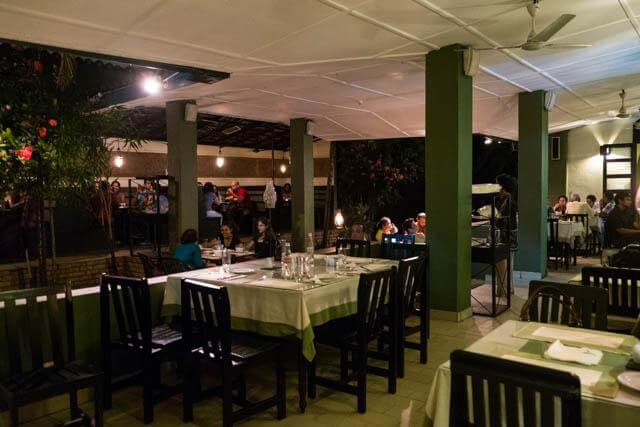
Tucked away in the Cinnamon Grand Colombo 7 , Nuga Gama — a proudly “carbon neutral” venue — is known for its traditional Sri Lankan cuisine in a setting that evokes Sri Lankan village life under a 200-year old banyan tree.
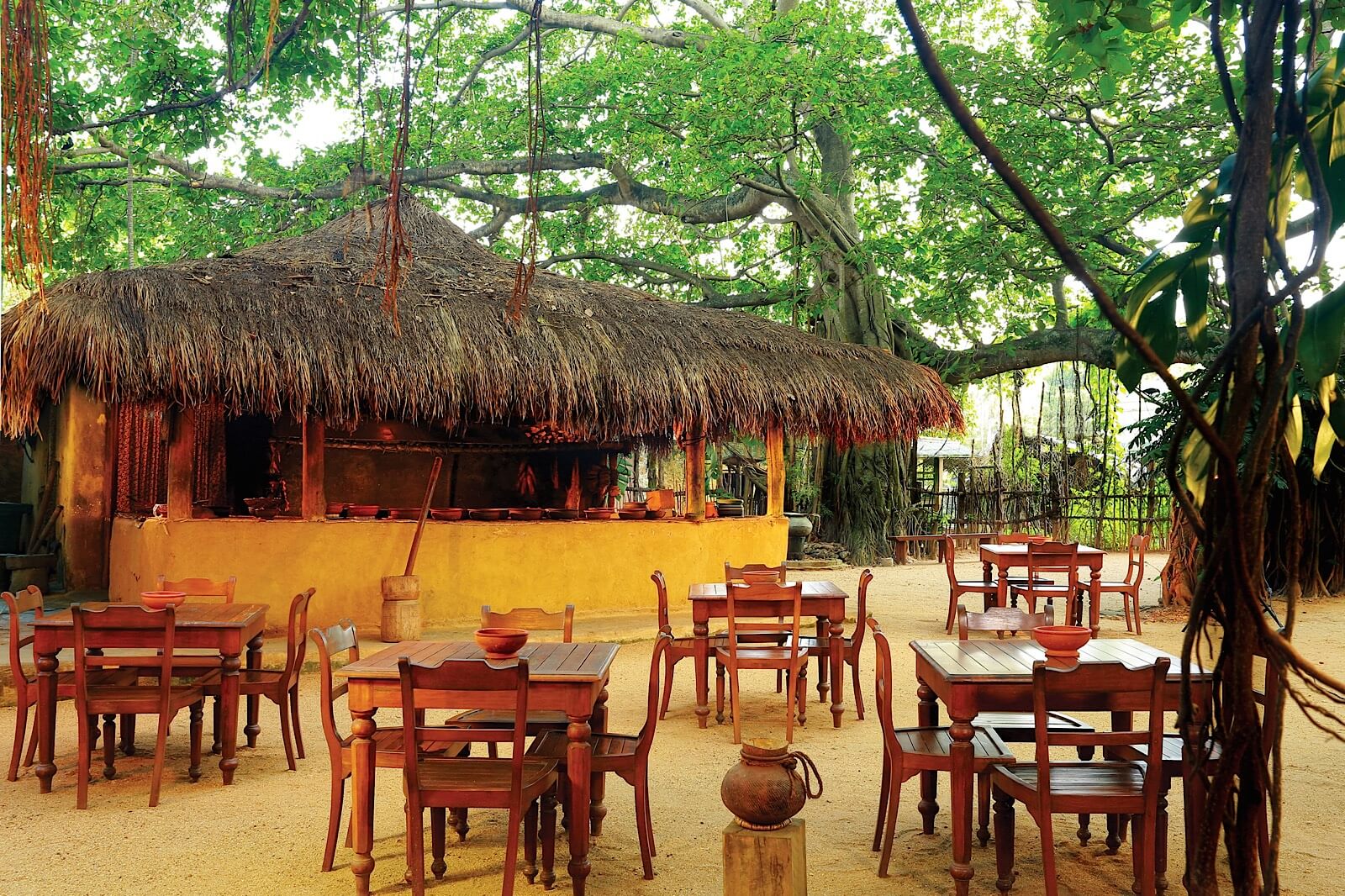
If it’s street food you’re after, Nana’s serves it up hot and delicious in a stall right on the scenic, oceanside Galle Face Green. Enjoy a bowl of kottu — chopped roti (a flatbread) with some combination of vegetables, egg and meat — while you watch the colorful kites overhead, listen to the ocean and take in gorgeous seaside sunsets.
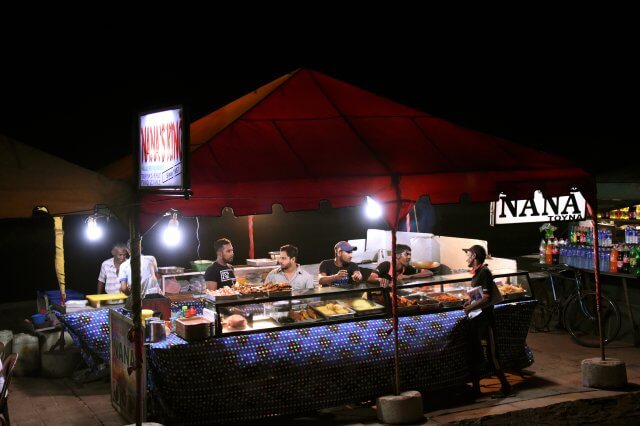
Explore houses of worship
Sri Lanka is home to many religions including Buddhists, Muslims, Hindus and Christians, and boasts a number of striking temples and houses of worship open to visitors.
Temple of Sri Kailawasanathan Swami Devasthanam Kovil: This stunning, colorful structure — the oldest Hindu temple in Colombo — is a must-see, at the very least from the outside. If you do plan to go inside, dress modestly, and note that you’ll have to remove your shoes to enter.
Gangaramaya Temple: This beautiful Buddhist temple, over 120 years old, sits within a vibrant complex devoted to Buddhist worship and learning on the edge of scenic Beira Lake.
Jami Ul-Alfar Mosque: The striking red and white “Red Mosque” is tucked away in Colombo’s commercial district, Pettah. Completed in 1909, the building represents a mix of architectural traditions reflecting Indo-Islamic, British and Indian styles.
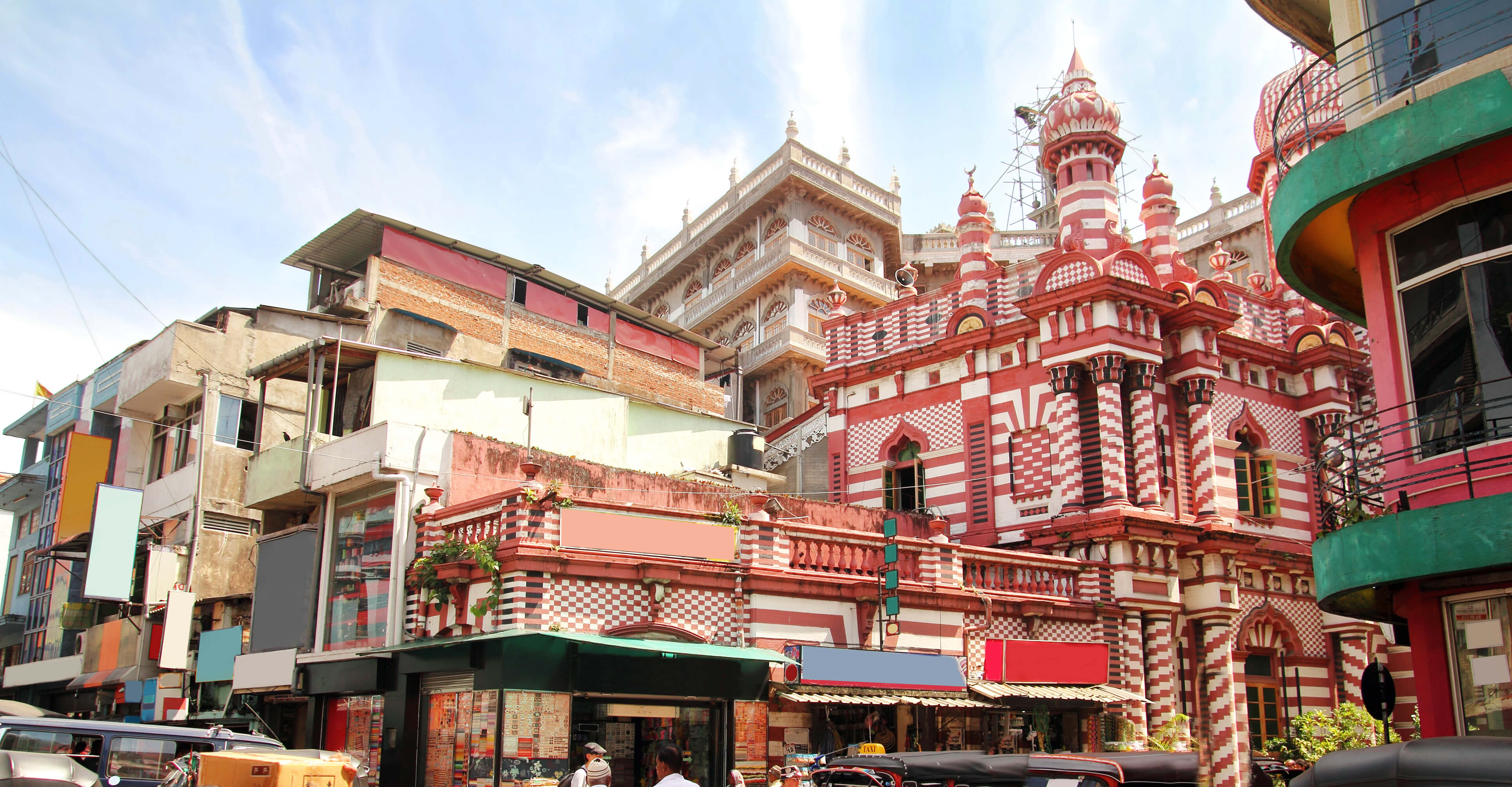
Jami ul-Alfar Mosque
Shop
Known for its gemstones, wood carvings and a range of other handicrafts, Sri Lanka has plenty to offer anyone looking for a keepsake or gift. Explore Colombo’s artisan markets and boutiques for a chance to take home a variety of mementos.
Lakpahana
A commercial arm of the Sri Lanka Craftsmen and Artisans Association, Lakpahana houses handicrafts from over 500 artisans across the island. Browse jewellery, woodcarvings, masks, pottery, hand-woven products and many other items — great if you’re looking for both affordable souvenirs and higher-end items.
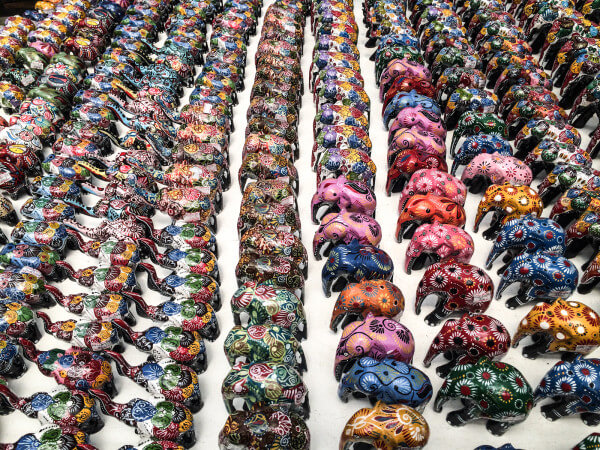
Kalaya
Add a touch of Sri Lanka to your home with their beautiful bedding, rugs, lamps, crockery and other housewares. Kalaya prides themselves on using natural and sustainable materials, and supporting the work of rural artisans.
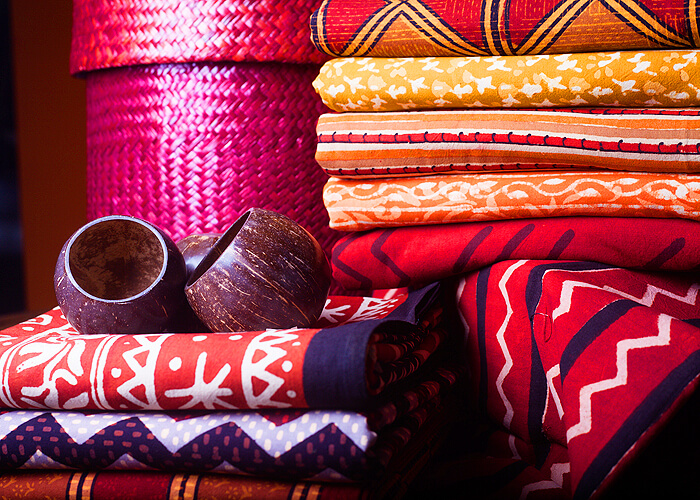
Stone ’N’ String
Sri Lanka boasts an abundance of precious and semi-precious stones — which, for more than three decades, Stone ’N’ String has been crafting into gorgeous jewelry. This is a great spot to treat yourself to something beautiful or find the perfect gift for a special someone.

Relax
This laid-back city offers plenty of opportunities to relax, whether on the edge of the striking Indian Ocean, with a tropical cocktail by the pool or on the massage table.
Galle Face Green: Join a local evening ritual and sit or stroll along the Galle Face Green, stretching about a third of the mile along the edge of the Indian Ocean. Stop to watch children flying dozens of colorful kites, families playing in the ocean and dramatic sunsets.
Pool Bar, Galle Face Hotel: This picturesque poolside and oceanside bar is the perfect place to relax after a day of sightseeing.
Azmaara Spa: Unwind with a balinese massage or a coconut scrub at the award-winning Azmaara Spa in the Cinnamon Lakeside

Galle Face Green
Stay
Galle Face Hotel
This iconic, colonial-era hotel offers luxury accommodations overlooking the ocean. Originally a Dutch villa, the Galle Face Hotel opened in 1864 and today, combines historical charm with modern comforts. Even if you don’t stay there, it’s worth visiting.

The Havelock Place Bungalow 7
A true hidden gem, the Bungalow, a converted 19th-century house, is an oasis of green space and rustic comforts.

Take a day trip
Sri Lanka is small as countries go, and diverse ecological zones are within easy reach of the capital. Explore sandy beaches, hike ancient monuments, visit cities hidden in lush jungle or glimpse wildlife during a quick day-trip from Colombo. Transportation is inexpensive; even hiring a private car for the day can be very reasonable — all the more reason to get out and explore.
Pinnawala Elephant Orphanage: Meet endangered Sri Lankan elephants at this wildlife reserve where they work to protect and rehabilitate the species. At around an hour and a half away, Pinnawala is an easy train ride or car trip from Colombo.
Kandy: Visit the lush, inland city of Kandy — last capital of Sri Lanka’s ancient kings. Tucked away in mountainous jungle, the scenic two and a half hour train ride winding through the rainforest itself makes the visit worthwhile.
Sigiriya: Explore the ruins of the ancient city (a UNESCO World Heritage Site) and hike the dramatic rock fortress, the “Lion’s Rock.” The easiest way to get there from Colombo is by car, which should take around three hours.
Galle District Beaches: Head south by train or car to one of the scenic coastal towns in Galle District. Unawatuna and Hikkaduwa are known for their beaches. If you have time, visit Galle’s Old Town, a historic, colonial-era town and fortress and a UNESCO World Heritage Site around an hour and a half from Colombo.
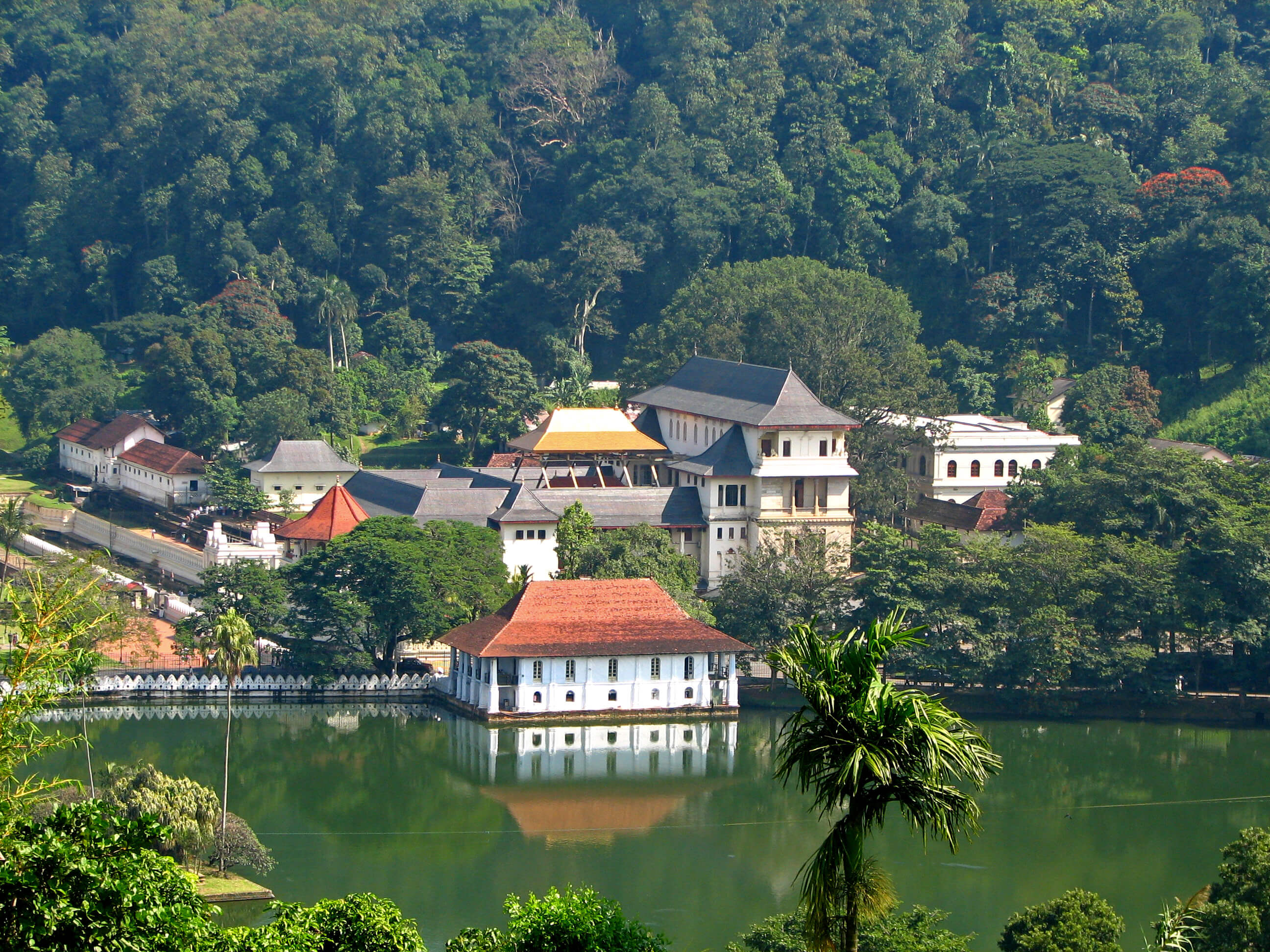
Kandy